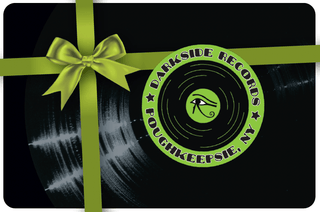Orchestra Orfeo- Sibelius, Britten, Barber & Part: Romanza - Music for Strings

This album features two compositions by Jean Sibelius from different moments in the Finnish musician's life. The Impromptu Op.5 for string ensemble is an early work from 1894, in which Sibelius uses some thematic materials from his solo piano impromptus Nos. 5 and 6 from the Op.5 set. The Romance in C Op.42 (1903) was composed during a difficult phase in the composer's life caused by excessive alcohol consumption, which prompted him to leave Helsinki and move with his wife near to Lake Tuusula, where he could dedicate himself to composition far from the temptations of the Finnish capital. The piece is divided into short sections in which the melodic ideas arise from fragments of the octatonic, or diminished, scale of alternating whole and half steps supported by dissonant harmonies that add further tonal instability. Samuel Barber's typically inspired melodic vein emerges from the very beginning in his Serenade Op.1 for String Quartet or String Orchestra, dating from 1928. Featuring chromaticism's and dissonant passages, a duality is established between a first, rhythmic and impetuous thematic idea and a lyrical melody. The final movement brings greater serenity and joy through the choice of a major mode and the adoption of a graceful and leaping theme whose fragments pass in counterpoint between one voice and another. When Benjamin Britten composed his Simple Symphony Op.4 he was just 20 years old, and he describes the idea in an introduction to the score: 'This "Simple Symphony" is entirely based on material from works which the composer wrote between the ages of nine and twelve [.]. Although the development of these themes is in many places quite new, there are large stretches of the work which are taken bodily from the early pieces - save for the re-scoring for strings'. In effect, Britten extrapolates eight themes from his juvenile compositional production, associates two of them with each movement and creates a structural mix between the four movements of a Classical symphony, the dances of the Baroque suite and popular folklore. Da pacem Domine is a Gregorian style piece composed by Arvo Pärt in 2004 to commemorate the victims of the Madrid terrorist attacks on trains, which killed 192 people. Pärt first composed a version for four voices on the text of a Latin prayer. That atmosphere of contemplation is preserved in his subsequent edition for chamber orchestra. The modal composition, in D Dorian, conveys the feeling of a search for calmness, a request from man to God for peace in the wake of such a tragedy. Scattered appearances of B flat and the leading tone (C sharp) mitigate and add a piquancy to the modal atmosphere.
This album features two compositions by Jean Sibelius from different moments in the Finnish musician's life. The Impromptu Op.5 for string ensemble is an early work from 1894, in which Sibelius uses some thematic materials from his solo piano impromptus Nos. 5 and 6 from the Op.5 set. The Romance in C Op.42 (1903) was composed during a difficult phase in the composer's life caused by excessive alcohol consumption, which prompted him to leave Helsinki and move with his wife near to Lake Tuusula, where he could dedicate himself to composition far from the temptations of the Finnish capital. The piece is divided into short sections in which the melodic ideas arise from fragments of the octatonic, or diminished, scale of alternating whole and half steps supported by dissonant harmonies that add further tonal instability. Samuel Barber's typically inspired melodic vein emerges from the very beginning in his Serenade Op.1 for String Quartet or String Orchestra, dating from 1928. Featuring chromaticism's and dissonant passages, a duality is established between a first, rhythmic and impetuous thematic idea and a lyrical melody. The final movement brings greater serenity and joy through the choice of a major mode and the adoption of a graceful and leaping theme whose fragments pass in counterpoint between one voice and another. When Benjamin Britten composed his Simple Symphony Op.4 he was just 20 years old, and he describes the idea in an introduction to the score: 'This "Simple Symphony" is entirely based on material from works which the composer wrote between the ages of nine and twelve [.]. Although the development of these themes is in many places quite new, there are large stretches of the work which are taken bodily from the early pieces - save for the re-scoring for strings'. In effect, Britten extrapolates eight themes from his juvenile compositional production, associates two of them with each movement and creates a structural mix between the four movements of a Classical symphony, the dances of the Baroque suite and popular folklore. Da pacem Domine is a Gregorian style piece composed by Arvo Pärt in 2004 to commemorate the victims of the Madrid terrorist attacks on trains, which killed 192 people. Pärt first composed a version for four voices on the text of a Latin prayer. That atmosphere of contemplation is preserved in his subsequent edition for chamber orchestra. The modal composition, in D Dorian, conveys the feeling of a search for calmness, a request from man to God for peace in the wake of such a tragedy. Scattered appearances of B flat and the leading tone (C sharp) mitigate and add a piquancy to the modal atmosphere.



![Chappell Roan- The Rise And Fall Of A Midwest Princess [Anniversary Edition] [My Kink Is Coral 2 LP]](http://shop.darksiderecords.com/cdn/shop/files/ChappellRoan_AnniversaryPS.jpg?v=1727164438&width=320)
